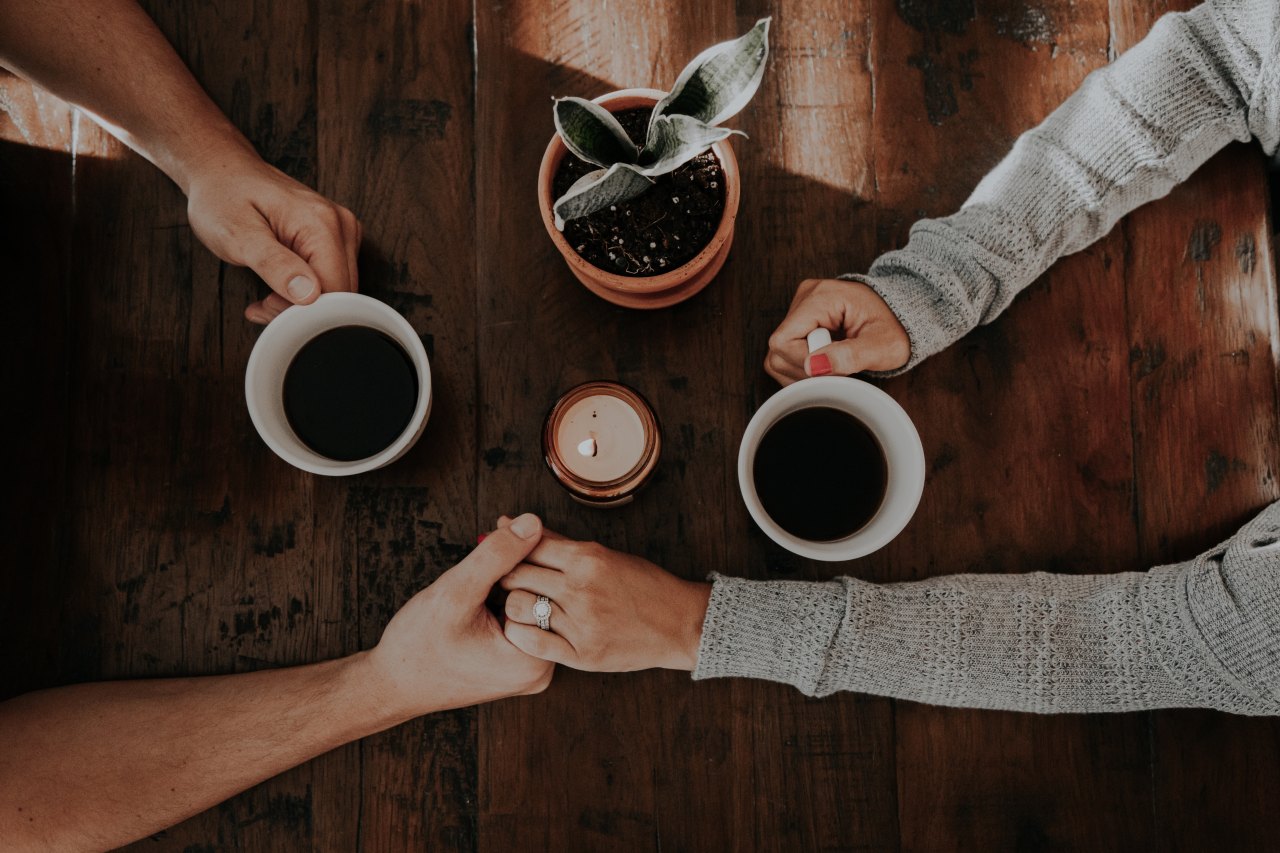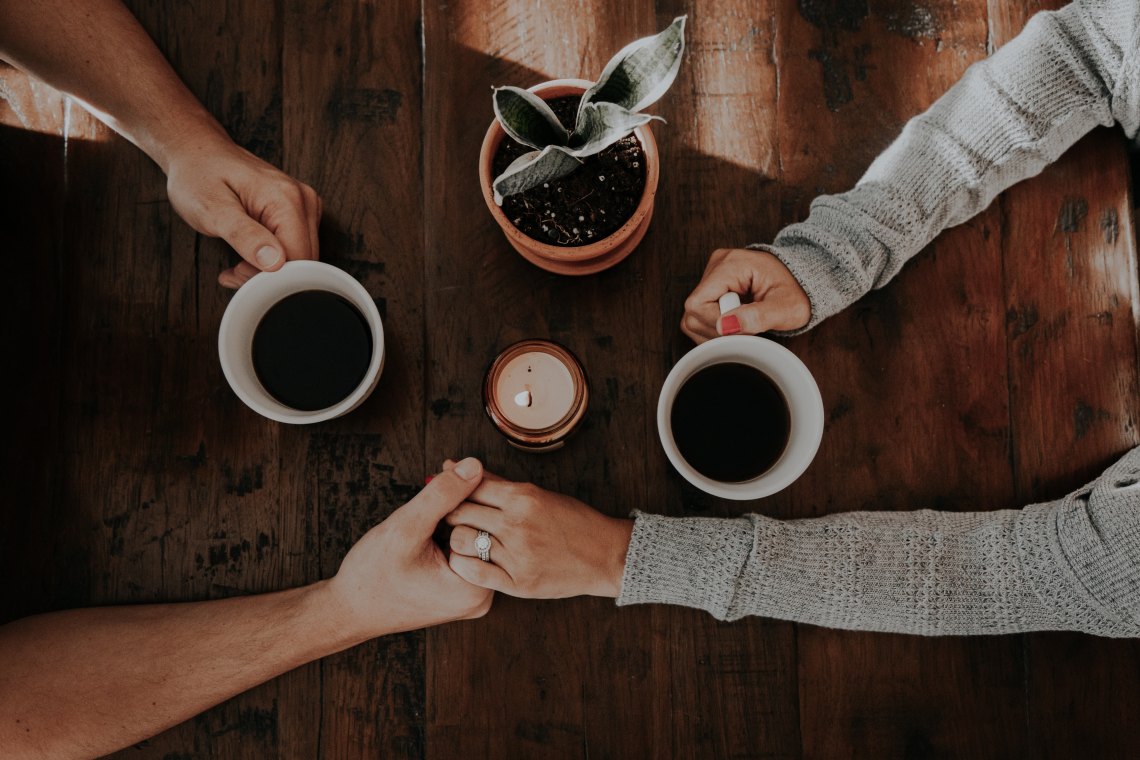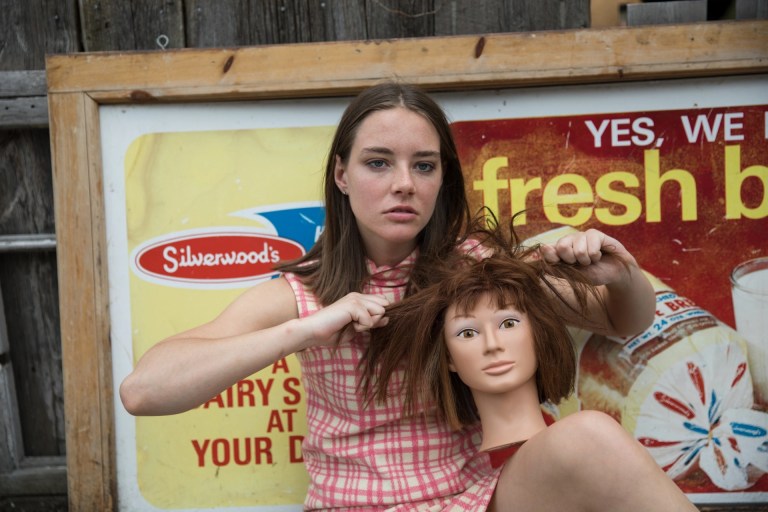Learning Love In The Age of Succulents
Turns out: if you love a succulent and didn’t know it, it needs more space than attention and water.


I somehow managed to kill a succulent in the worst drought Cape Town has seen in 100 years. It was a gift. Excited about it blossoming, I managed to drown it. Of course, I didn’t actually read up on how to maintain a succulent. It wouldn’t be so difficult to keep one alive, right? Why bother? They are stubborn little fuckers. You can do this. Just give it water and check in regularly… Turns out: it died, because I gave it too much water. I couldn’t help but see the metaphor in my romantic relationships. ;)
For some, it’s natural in the face of a blossoming relationship to throw more love onto it. Turns out: if you love a succulent and didn’t know it, it needs more space than attention and water.
My plants: Dead Buddha’s Temple, thriving succulents, and fern. I’m trying, okay.
The thing is: much of it doesn’t make sense when we haven’t really ever been taught love. For most of us, we’ve only ever been loved (by parents, friends, and lovers), and have fallen in love with others (family, friends, lovers and sometimes very awesome cryptography). BUT. Few have been *taught* love. There’s so many articles, romantic comedies, Tinder hookups, uncertainty, that leaves us largely ill-equipped to understand how we love ourselves and how others love others.
Only the insane keep doing things over and over and expecting different results.
“If you keep killing your plants, Simon, maybe Simon, just maybe you should Google how to take care of them?” So I called my sister-in-law, the amazing plant whisperer, and got amazing advice on how to take care of my (actual) plants.
Like most things in life, that’s what we do. When we fail at things, we try to understand them. But somehow with, love, loving and relationships, we still feel that we should keep ourselves at some depth. For to understand love, is apparently to demystify it.
Loving is apparently for the currents. It should just flow, right? We shouldn’t be building boats. We shouldn’t be waiting on the sidelines till it’s calmed down. We shouldn’t understand its pushes and pulls. Just jump in, and yolo… Let it endlessly take you along like a Meatloaf ballad. As one reviewer on a relationship self-help book puts it:
“I don’t want people to know that I spend time thinking about my relationship status. I want to seem cooler than that.”
Well… Fuck. That.
With the romantic relationships I’ve had, all of them running into the same dead end, it was a great time to stop for reflection.
The pattern must be me, right? Is it? And so, I did what any self-respecting explorer would do: I took the opportunity to go on an adventure!
I started doing three things: meditating more (reduces noise and my ego), reading, and of course writing. This blog post is as much for me, as my desire to share what I’ve learned.
Relational Botany
Getting great recommendations from friends, I recently read the following books that helped me substantially plot the map better. I want to share some of the insights and how I feel/think about them.
I saw myself in them. I saw others in them. But most of all, from these authors that deal with these issues a lot, who’ve explored a lot more than I did, I got a better understanding of how *we* are. Like a map, I don’t take all of it as truth (yet), but I use it to guide me further along.
Attached: The New Science of Adult Attachment and How It Can Help You Find — and Keep — Love by Amir Levine and Rachel Heller
This was quite fascinating: the premise that early childhood relationships with our caregivers shape how we deal with romantic relationships.
The push and pull that we have with these caregivers, defines the push and pull we have in our own romantic relationships. The first relationships that taught us love, determines how dealt with the lack of it. Inconsistent love, or lack of it, means we changed to cope with it.
Whilst we are capable of change, it’s likely that we end up in some default style of attachment: broadly -> secure, anxious or avoidant. We are either okay with intimacy and okay with giving space where it’s needed. That’s being secure. Or we are insecure, leading to anxious or avoidant attachment. Anxious attachment has a strong need for intimacy and validation in the relationship. Avoidant attachment is the opposite: an overarching siren that flares when someone gets too close. The need to remain free and independent.
What was fascinating in this, was discovering the anxious/avoidant trap. Because securely attached people find relationships that make them happy fairly early on, and is capable of maintaining secure, long-term relationships, the dating pool is often left for the anxious and avoidant. A relationship that when they find each other, often spirals out of control. The anxious person wanting more intimacy, with the avoidant person wanting more space. The anxious person, flaring, starts doing things to rekindle intimacy, which leads the avoidant stepping back even more. It eventually derails, with the avoidant becoming so aloof as to disappear and the anxious throwing in the towel.
I enjoy the stereotypes portrayed here because although it’s broad, it signals traps often experienced in relationships: the inability for people to understand how they are dealing with their own anxieties and problems, and the subsequent inability for them to understand how the other person feels.
You might be unconsciously attracted to succulents: people who are independent doesn’t need much love, needs a lot of air and sun. A little water every now and then is enough to replenish their souls. They are thus defacto avoidant: too much water, and they give up, unable to deal with the deluge. This disconnect is apparent in many relationships: people expecting to fall in love with a fern, a relationship that needs to be constantly moist with love.
A secure relationship knows how to deal with this push and pull: understanding how to deal with a partner wanting space while the other is in the mood for intimacy.
The hardest thing about reading this was realizing that if you form insecure attachments, is that it’s likely quite hard to change this. We easily pick up languages as kids, and it becomes harder to learn them as an adult. Similarly, if we want to move secure attachments, it’s going to take active work to unlearn the languages we grew up with.
We have to approach loving better like the exercise we do for our physical and mental health. On cold, winter mornings, everything in your body is telling you NOT to get up for that run, but you know you should. If we want to move to secure love, everything in our body might tell us to run away, but we have to get up and actively work to love better. Like our physical bodies, it’s likely that if we don’t do something about when we are young, we’ll get even more stuck in those ways. Good habits start yesterday.
Mating in Captivity: Reconciling the Erotic and the Domestic by Esther Perel
This was really great. Esther Perel, having counseled many couples, gives her perspective on how one maintains a sense of intimacy/closeness and desire over the course of a long-term relationship. Usually, if unchecked, after the honeymoon period, erotic desire goes away and its wake leaves an intimate form of companionship. Some people are okay with this unavoidable trend.
If unchecked, however, this desire could still want to thrive, and it’s then that it can lead to infidelity.
In order to maintain the need for intimacy, domesticity, and companionship alongside lust, desire, and passion, Perel recommends that we learn how to give space to our partners: to maintain separateness (the “other”). It fits decently into the attachment narratives. The idea that letting go is as important as to knowing when to pull in.
It reminded me of my penchant for complexity theory. Systems thrive the most at the proverbial “edge of chaos”. One where too much order hasn’t led to complete inert stasis or one where the chaos hasn’t unraveled everything to meaningless noise. The feedback loops on either side are strong: Todestrieb (the death drive) pulling towards annihilation, and Eros (order), reifying everything to a stand-still. It takes active effort to dance in this middle. To accept the pushes and the pulls.
Ultimately in a long-term relationship to maintain eroticism and desire we need to accept that the other is separate. They are their own selves: even acknowledging their own erotic selves. The goals are not hiding from it, or protect the relationship from it, but to thrive with it.
The State of Affairs: Rethinking Infidelity by Esther Perel.
I loved Esther Perel’s writing a lot so had to continue reading what she wrote. She takes the last chapter from ‘Mating in Captivity’ and turns it into a separate book: A State of Affairs. I was curious how people deal with the boundaries of love. How do people define cheating or infidelity?
Again, she also paints a tapestry of explanations from different cultures on how people deal with this push and pull, which was really great: because cheating isn’t well defined. It’s up to the couple to define them. The reality is that it’s blurry, but the one we most deem to be an implicit line (unless explicitly changed) is sexual infidelity. I was curious how others see this, and she does touch briefly on the more finer lines and how people define them.
She proceeds to touch upon a broad range of things surrounding infidelity: how people deal with it, challenging cultural norms around it and interestingly asking *why* do people cheat.
This was particularly interesting when she asked in a later chapter: “Why do happy people cheat?”. Even in secure, happy, loving relationships, people cheat. The reason is that it also amounts to identity exploration: being able to explore a side of yourself that is not within the confines of the relationship. There’s a story about a loving relationship where the woman felt constrained by the fact that she led a certain expected path of her life. She never had the chance to explore facets of who she is and thus cheated on her husband with someone she would never settle with.
It’s an interesting scenario because it’s somewhat of a paradox. In a relationship, you don’t want to necessarily constrain your partner from exploring who they can be, but if they can only do that behind your back, does that potentially absolve it? I don’t think so since the trust was broken, but it still raises an interesting grey area.
The 5 Love Languages: The Secret to Love that Lasts by Gary Chapman
This is a relatively popular relationship self-help book. The premise is that people have different ways of seeing love. Certain actions from partners make them feel the love they want. It’s possible that a couple can easily talk past each other: doing things to their partner thinking it’s what they want, and not getting the love they need because their partner doesn’t understand it.
Generally, Gary found that these languages can be largely put in the following buckets:
Gift Giving, Acts of Service, Quality Time, Words of Affirmation and Physical Touch.
It’s a practical way to make sure each partner gets what they want from a relationship (keeping their “love tanks” full), and I would say these buckets would cover most of it.
What was interesting was noticing that most of these signal willing self-sacrifice to care for your partner.
Gift Giving: time (have to be thoughtful about the gift) + money.
Acts of Service: time + work.
Quality Time: time + presence.
Words of Affirmation: presence (being attentive about what emotional support they need).
Physical Touch: time + presence + intimacy vulnerability.
What I didn’t get from the book was how you use love languages with people with different attachment styles. All of these are about increasing love. For avoidants, for example, doing any of the above causes more closeness when they actually need space. Maybe “Space” is its own love language?
Wired for Love: How Understanding Your Partner’s Brain and Attachment Style Can Help You Defuse Conflict and Build a Secure Relationship by Stan Tatkin
This book was a love and hate for me. It’s practical, but some directions felt a bit extreme. Stan Tatkin combines attachment theory + neurobiology which is a fresh addition to understanding how one deals with attachment insecurity.
What I like is how he describes the different parts of the brain and how they interact with each other. The primitives: responsible for immediately responding for us. It’s the fight or flight responders. The ambassadors: the parts of the brain that keeps the primitives in check (“eg, relax, there’s no lion in the bushes”). Some people have weak ambassadors, in which case the primitives reign. It’s the scenarios where reason and rationality are drowned out. Knowing this helps and knowing how to deal with your partner’s primitives and ambassadors help. This is not only useful in relationships.
It became apparent recently when I had to make a big decision on short notice unrelated to love. Rationally, I knew it was a no-brainer, but I had trouble with the fact that a big decision had to be made quickly. It pushed me into a corner and my primitives were flaring. But, I knew that. I knew if I had time, I could suss them down and be okay with the big decision I was about to make. So, I did make the big decision whilst still feeling uncomfortable about it (“the primitives were still shouting”) and it turned out okay.
Stan uses different metaphors for attachment styles. He calls them anchors (secure), islands (basically avoidants) and waves (pushes and pulls a lot). I like metaphors. It helps to map things better.
Given this background, he gives certain guidelines on how to have a more effective relationship. Interestingly, he calls it the creation of a “couple bubble”: knowingly creating this space for just the couple and how one manages it and protects it.
What I didn’t like though was how the couple bubble felt quite extreme. Perhaps that wasn’t the intent, but it came off that way. Drawing the lines quite hard between the couple and the world. It felt somewhat out of line with Esther Perel’s writing: having intimacy and connection whilst maintaining healthy “otherness”. Whilst there are definitely useful practical recommendations it felt more like one was trying to build a large shield around the couple because it protects them from the outside world.
Come as You Are: The Surprising New Science that Will Transform Your Sex Life by Emily Nagoski
Sex and eroticism is a big part of any romantic relationship. Given that I like physical intimacy (not just sex) and that I’ve been in relationships where the sex has been clearly better than others, I wanted to understand it better. This book by Emily primarily touches on female sexuality, mainly because sexuality has mostly been framed from the male perspective. It sometimes produces anxiety and uncertainty due to these warped narratives. Whilst the numbers indicate general sexual styles of women and men, it’s still just averaged. Given this, what’s the most important is that she constantly stresses that there is no “normal.” Its important for the average man to understand how the average woman’s sexual response is. There’s a few interesting lessons and takeaways: non-concordance, responsive vs spontaneous desires and accelerators vs brakes.
There’s often a misunderstanding about the separation of concern between arousal (physiological responses) and desire (wanting sex). This is news for a lot of men, where concordance between them is usually correlated (eg: an erection is usually couple with desire). It’s substantially less for most women.
A disconnect often occurs between those with spontaneous sexual desires vs those with responsive sexual desires: stronger responsiveness needs context a lot more. Spontaneous desire can often create desire first and then become aroused: eg, scheduling sex. A responsive could be baffled: “but, how do I know if I will have the desire for sex then?”
Ultimately, if one has more responsive sexual desire: requiring arousal and more context, and one wants to have more sex, then it’s important to understand how to create those contexts. Contexts where there are fewer brakes (turn-offs) and more accelerators (turn-ons).
Emily expands on Esther’s Perel’s notion of producing intentionality into eroticism. It is the realization that there is no normal and adding a sense of playfulness around sex allows partners to explore it more easily together: creating more context for it.
To Read:
It’s been an interesting ride reading all these books. It’s been fascinating in many ways, but I don’t think I’m done. The following books are on my to-read list.
More Than Two: An Ethical Guide To Polyamory by Franklin Veaux and Eve Rickert
Polyamory is interesting. If we assume that we have many kinds of relationships with many people in our lives, why are we drawing the lines on exclusivity in romantic and sexual relationships? There might be evolutionary biological reasons it is better to pair off in monogamous ways, but the questions are still interesting, even in the context of questioning whether raising kids with only one set of parents is a good idea or not.
I’m particularly interested in how people that practice polyamory manages their relationships. Since there are more people that more intimately share a life with, the expectations, boundaries, and communication have to be substantially higher. Long-term secure polyamory needs strong foundations, and I feel those lessons could be hugely useful in a monogamous relationship. Keen to dive in.
Decisive by Chip and Dan Heath
This isn’t specifically related to relationships, but I wanted to know how I can make sure I’m making the best decisions within them. When you are faced with scenarios within the relationship that’s hard to properly deal with: how do you get the best outcome? I’ve read some of the parts of it: mainly getting to grips with the core parts so far. It has helped substantially: even in other parts of my life. It’s called WRAP.
Widen your options, Re-assess your assumptions, Attain distance before deciding and Prepare to be wrong. I like it.
Why Does He Do That?: Inside the Minds of Angry and Controlling Men by Lundy Bancroft
I’m interested in what abuse looks like. I think sometimes under the guise of stubbornness or even stoic attitudes it could potentially amount to abuse. Physical and verbal abuse is the obvious forms of abuse. But are there other forms of abuse that is less obvious and less clear? Are we potentially perpetrating it without us knowing? Were our previous partners actually abusive and we didn’t know it?
Some of the reviews and blurbs I’ve read about it seem interesting, specifically the fact that ultimately abuse is about reducing the options your partner has. Keen to read this and understand abuse better.
Growing The Garden: Where To From Here?
It’s been an interesting journey and I hope to learn a lot more still: both from future relationships and reading more. I’ve been more single than not, and I don’t just DO relationships. I’m okay with being alone, but I know I would enjoy life more knowing I can share the ups and downs with a romantic partner.
It’s allowed a lot of introspection which has been helpful. It has made me question why I get attracted to certain women: particularly why I get attracted to “succulents” (those who can’t readily deal with intimacy and closeness). I think it’s mainly because I want a relationship where the sum is better than the parts: a formidable partnership where together, you can go further in life where no single person can go. That usually manifests as being attracted to women who are independent and ambitious in their own right: not being content with letting the world happen TO them. And, the reality is, the Venn diagram of those people with avoidants seems pretty high. They’ve learned not to need other people for emotional support. They’ve learned to be self-sufficient. They often seem perpetually busy and sometimes legitimately don’t have time for sharing a life with someone (that goes according to average expectations of one).
Planting the Seeds
Ultimately, love has no normal. We love in different ways. We don’t understand ourselves, and we don’t understand each other. And thus, we water succulents to death and leave ferns to dry. Some people are okay being succulents, taking in the desert heat on their own, away from the world. It doesn’t represent loneliness, but solitude: a comfortable state of otherness.
We are somewhat hardwired for pairing up, but I think we shouldn’t be putting round pegs in square holes just because we should.
Like many things in life though. It’s *also* a choice. The biggest takeaway is that, yes, sometimes love just come naturally, but if you want to have any form of a long-term, secure relationship, it’s going to be a choice: a choice to work on it day by day, to suppress the primitives when you are arguing, to listen, to give them the time of day, to remain unconditional.
It’s easier to do things when we actively choose them: to assuage our short-term cognitive dissonance, knowing not to settle for the lower peak, but to keep pushing through for the highest peak.
As previously stated: that early winter’s morning, when you know you should go for a run, but every fiber in your body is ignoring it. We know not to listen to that because we know what we get from it. But often, to really excel in it, you have to choose it, even when it sometimes doesn’t feel right. And yes, I know, exercise has more understandable and knowable benefits than wondering whether you should stay in a relationship or not. The point is: if we left love only to when it feels natural, in the same way, we treated our bodies, we would all be dead. Love won’t work if you just want to chow down its refined carbs and sugars.
There’s a quote from Nietzsche that sums it up decently:
“One must learn to love. — This is what happens to us in music: first one has to learn to hear a figure and melody at all, to detect and distinguish it, to isolate it and delimit it as a separate life; then it requires some exertion and good will to tolerate it in spite of its strangeness, to be patient with its appearance and expression, and kindhearted about its oddity: — finally there comes a moment when we are used to it, when we wait for it, when we sense that we should miss it if it were missing: and now it continues to compel and enchant us relentlessly until we have become its humble and enraptured lovers who desire nothing better from the world than it and only it. — But that is what happens to us not only in music: that is how we have learned to love all things that we now love. In the end, we are always rewarded for our good will, our patience, fair-mindedness, and gentleness with what is strange; gradually, it sheds its veil and turns out to be a new and indescribable beauty: — that is its thanks for our hospitality. Even those who love themselves will have learned it in this way: for there is no other way. Love, too, has to be learned.”
So, to love better, one needs to also have romantic evenings of life. As Speed Levitch so eloquently puts it (one of my favorite quotes).
“On really romantic evenings of self, I go salsa dancing with my confusion.”
Once you learn what plants work in what climates, how they work with each other, and how much maintenance they need, you can build a thriving garden.
Hopefully, one where the dogs can run one day and the kids can lie in the sun. ![]()




